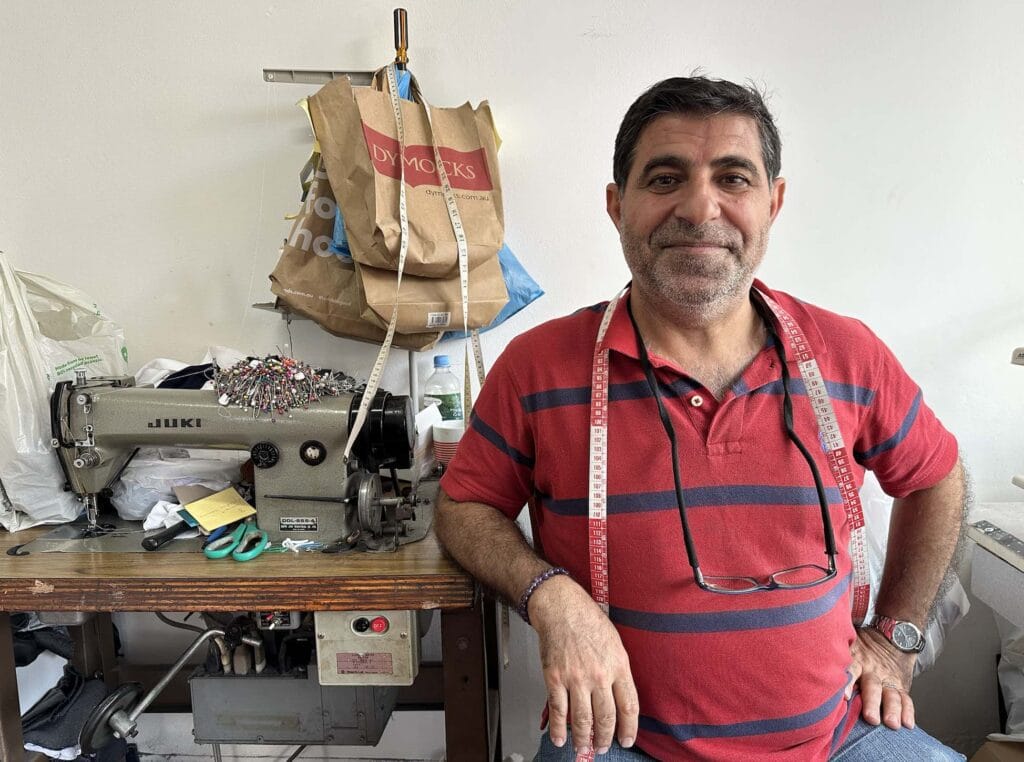Top Tailor Perth Services: Tailoring Solutions for Perfect Fits
Top Tailor Perth Services: Tailoring Solutions for Perfect Fits
Blog Article
Understanding the Tailoring Refine: From Textile Choice to Final Fitting for the Suitable Closet
The customizing process is a complicated interplay of art and scientific research, beginning with the essential decision of material option and culminating in the precise changes of final fittings. Each textile type brings unique qualities that affect not just the visual appeal however likewise the garment's longevity and suitability for various events. Recognizing the nuances of tailoring strategies can elevate one's closet to unmatched levels of refinement. As we check out these components better, one should consider exactly how also the tiniest information can significantly impact the overall outcome of one's individual style.
Significance of Material Option
Choosing the right textile is important in the tailoring process, as it straight affects the comfort, resilience, and general aesthetic of the last garment (tailor perth). The option of fabric establishes the foundation for the garment's design, functionality, and performance. Different materials have special buildings, such as breathability, stretch, and weight, which can significantly influence how the garment drapes and fits the body
Moreover, textile option influences the garment's longevity and simplicity of treatment. Top notch fabrics can withstand wear and tear, preserving their look and structure gradually, while lower-quality products might cause pilling or fading. Furthermore, the right fabric adds to the garment's ability to change throughout celebrations and periods, therefore boosting versatility.
A customized piece made from a proper material not only showcases craftsmanship yet additionally elevates the wearer's self-confidence. Comprehending the subtleties of fabric selection is vital for any kind of tailoring undertaking. It guarantees that the end product not only fulfills the aesthetic desires of the client yet additionally aligns with practical requirements, thus achieving a harmonious balance in between kind and function in the customized wardrobe.
Kinds Of Fabrics and Their Uses
Comprehending the various kinds of fabrics available is important for making informed choices throughout the tailoring process. Each fabric possesses unique qualities that dictate its suitability for particular garments and events.
Cotton, recognized for its breathability and softness, is ideal for informal wear and summertime garments. Its convenience enables it to be tailored right into whatever from t shirts to gowns. Woollen, on the various other hand, is preferred for its heat and framework, making it an excellent choice for official suits and outerwear - tailor perth. Its natural flexibility assists garments preserve shape with time.
Silk emanates deluxe and is light-weight, making it best for eveningwear and fragile blouses; nevertheless, it needs careful handling as a result of its fragility. Bed linen, with its textured surface, is a popular choice for cozy environments, giving a crisp and ventilated feeling, but it wrinkles quickly, which may influence the garment's look.
Synthetic materials, such as polyester and nylon, deal toughness and resistance to wrinkles, making them appropriate for day-to-day wear and energetic garments. Understanding these material types and their residential properties enables better decision-making, making sure that each customized item not just fits well but likewise aligns with the desired objective and occasion.
The Tailoring Methods Discussed
The art of tailoring depends on a variety of techniques that change material right into well-fitted garments. Central to this process is pattern drafting, where a tailor develops themes based upon the client's measurements and wanted design. This first action makes sure that the garment will fit the user properly prior to any kind of reducing takes place.
Once patterns are established, cutting methods come into play. Precision is extremely important as inaccuracies can cause misfitting garments. Tailors typically utilize different reducing methods, such as single-layer reducing for intricate styles and multiple-layer cutting for efficiency on basic patterns.
Basting is one more essential technique, allowing dressmakers to momentarily stitch material assemble for a preliminary installation. This approach offers the chance to analyze the drape and general silhouette before final sewing.
Seaming methods, consisting of french seams and flat-felled joints, enhance the garment's longevity and aesthetic allure. Tailors additionally employ techniques such as interfacing and cushioning to give structure and form to certain areas, like collars and shoulders.
Finally, completing strategies, including hemming and edge finishing, make sure the garment's durability while supplying a refined look. With each other, these strategies create the foundation of reliable tailoring, causing charming, tailor-made garments.
Suitable Adjustments and Factors To Consider

Secret factors to consider consist of the shoulder fit, which should neither droop nor limit motion, and the sleeve length, which should permit comfy arm activity while preserving a polished appearance. Furthermore, modifications at the midsection can improve the shape, with choices to allow out or take in material as needed.
The increase of trousers is another crucial variable; it must sit conveniently above the hips without creating pain, enabling simplicity of activity. Hemming lengths for both trousers and skirts ought to reflect the user's recommended design while valuing proportions.

Maintaining Your Tailored Wardrobe
Constantly adhere to the care tag guidelines, which might suggest dry cleansing for delicate fabrics or device additional info cleaning for even more durable products. Prevent regular laundering, as this can put on down the textile and alter the garment's shape.
Storage space is just as essential; use padded hangers for layers and jackets to preserve shoulder structure, and store pants folded neatly or hung to avoid creasing. Shield garments from direct sunlight, which can discolor shades and damage fibers.
Additionally, routine assessments for minor repairs can stop bigger problems. Check for loosened buttons, fraying joints, or indications of moth damage, addressing these problems without delay to preserve the garment's honesty.
Last but not least, think about seasonal rotation. Putting on customized pieces in moderation permits fabrics to recuperate, expanding their life-span. By carrying out these upkeep approaches, you can ensure that your customized garments stay as immaculate as the day you initially used them, improving your suitable wardrobe for years to come.
Final Thought
The tailoring process, encompassing material choice, proficient methods, and exact fitting modifications, plays a crucial role in creating garments that improve both comfort and design. Each stage adds to the total performance of the end product, ensuring that their explanation apparel not only fits well however likewise shows private identification. In addition, comprehending the significance of maintenance extends the life of tailored garments, solidifying their value in a well-curated wardrobe. An extensive strategy to tailoring finishes in a confident and sleek look.
Selecting the ideal fabric is crucial in the customizing process, as it straight influences the convenience, longevity, and total aesthetic of the final garment. The option of textile sets the structure for the garment's capability, design, and efficiency. Different materials possess special properties, such as breathability, stretch, and weight, which can substantially impact just how the garment drapes and fits the body.
The art of tailoring counts on a selection of techniques that transform material right into well-fitted garments.The customizing process, incorporating material choice, experienced techniques, and accurate suitable changes, plays a crucial duty in creating garments that enhance both comfort and design.
Report this page